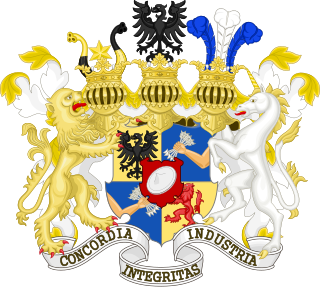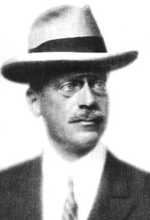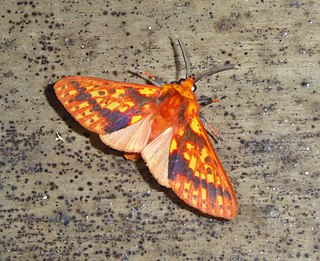
The Rothschild family is a wealthy Jewish family originally from Frankfurt that rose to prominence with Mayer Amschel Rothschild (1744–1812), a court factor to the German Landgraves of Hesse-Kassel in the Free City of Frankfurt, Holy Roman Empire, who established his banking business in the 1760s. Unlike most previous court factors, Rothschild managed to bequeath his wealth and established an international banking family through his five sons, who established businesses in London, Paris, Frankfurt, Vienna, and Naples. The family was elevated to noble rank in the Holy Roman Empire and the United Kingdom. The family's documented history starts in 16th century Frankfurt; its name is derived from the family house, Rothschild, built by Isaak Elchanan Bacharach in Frankfurt in 1567.

Nathaniel Mayer Victor Rothschild, 3rd Baron Rothschild was a British banker, scientist, intelligence officer during World War II, and later a senior executive with Royal Dutch Shell and N M Rothschild & Sons, and an advisor to the Edward Heath and Margaret Thatcher governments of the UK. He was a member of the prominent Rothschild family.

Lionel Walter Rothschild, 2nd Baron Rothschild, Baron de Rothschild, was a British banker, politician, zoologist and scion of the Rothschild family. As a prominent Zionist leader, he was presented with the famous Balfour Declaration which pledged to a Jewish national home in Palestine. Rothschild was the president of the Board of Deputies of British Jews from 1925 to 1926.

Ernst Johann Otto Hartert was a widely published German ornithologist.

Jeanne Stuart, born Ivy Sweet, was a British stage and film actress.

Édouard Alphonse James de Rothschild, also known as Baron Édouard de Rothschild was an aristocrat, French financier and a member of the prominent Rothschild banking family of France.

Gymnelia is a genus of moths in the subfamily Arctiinae. The genus was erected by Francis Walker in 1854.

Leucanopsis is a genus of moths in the family Erebidae. The genus was described by Alfredo Rei do Régo Barros in 1956.

Lophocampa is a genus of moths in the family Erebidae. The genus was erected by Thaddeus William Harris in 1841. It contains around 75 species.

Ormetica is a genus of moths in the family Erebidae.
Paracles is a genus of moths in the subfamily Arctiinae. The genus was described by Francis Walker in 1855. The species range from Panama to Patagonia, with quite a few in the southern temperate region of South America.

Spilosoma is a genus of moths in the family Erebidae originally described by John Curtis in 1825. A very heterogeneous group, it is in need of review by the scientific community, as certain species probably need reclassification into their own genera.

Symphlebia is a genus of moths in the family Erebidae. The genus was erected by Felder in 1874.
Teracotona is a genus of moths in the family Erebidae from the Afrotropics. The genus was erected by Arthur Gardiner Butler in 1878.
Disconeura drucei is a moth of the family Erebidae first described by Walter Rothschild in 1922. It is found in Peru.
Disconeura inexpectata is a moth of the family Erebidae first described by Walter Rothschild in 1910. It is found in Peru.
Disconeura lutosa is a moth of the family Erebidae first described by Jacob Hübner in 1823. It is found in Paraguay and Brazil.
Disconeura soror is a moth of the family Erebidae first described by Walter Rothschild in 1917. It is found in Brazil.
Gymnelia peculiaris is a moth of the subfamily Arctiinae. It was described by Rothschild in 1931. It is found in Bolivia.










